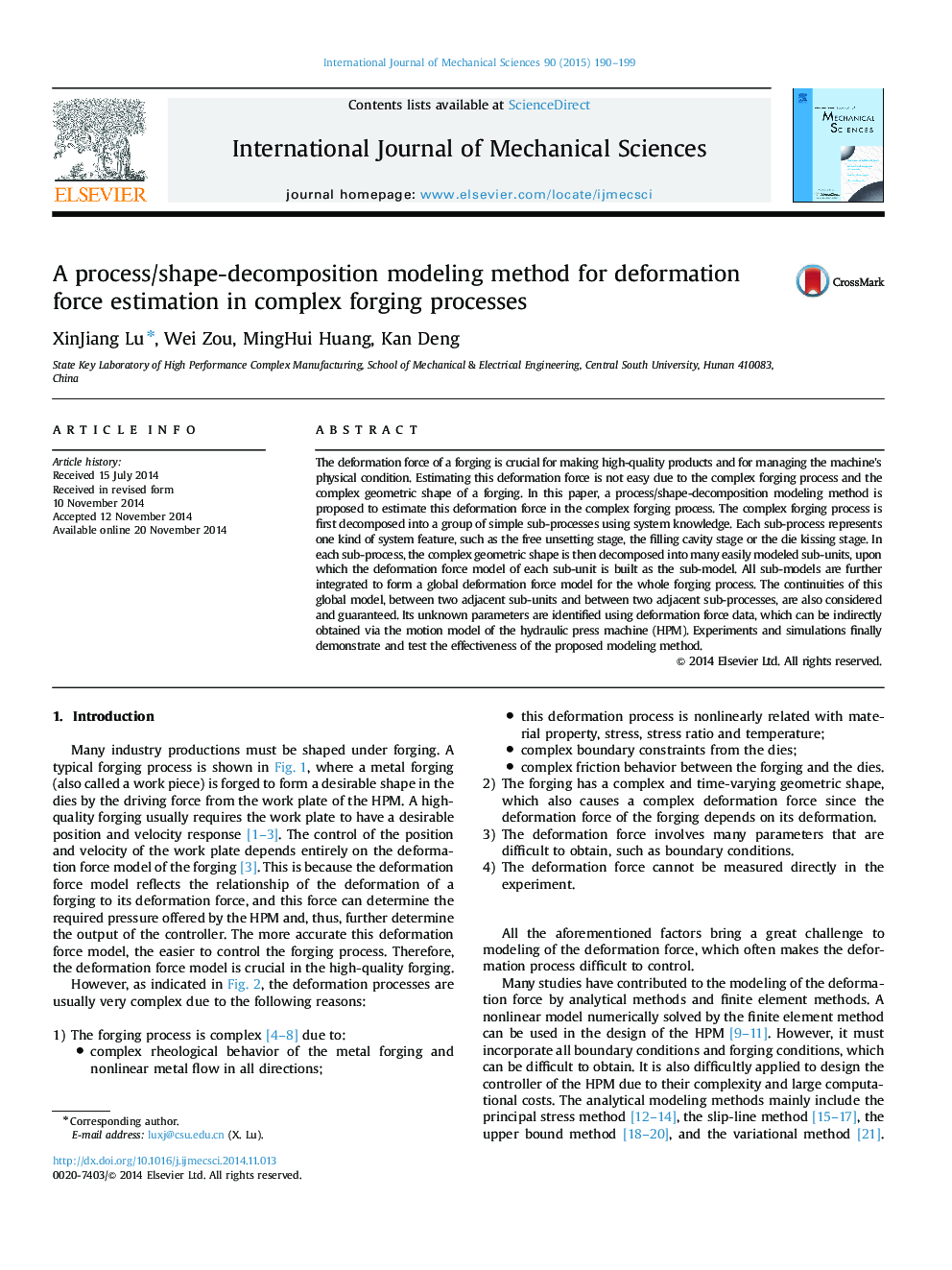| Article ID | Journal | Published Year | Pages | File Type |
|---|---|---|---|---|
| 782207 | International Journal of Mechanical Sciences | 2015 | 10 Pages |
•A novel method is developed to model deformation force in complex forging processes.•Unknown parameters in the forging process can be identified from data.•The continuities of the global model are also considered and guaranteed.•The modeling task is shared by a group of simple sub-modeling tasks.•Both numerical simulations and experiments test that the proposed method indeed works.
The deformation force of a forging is crucial for making high-quality products and for managing the machine׳s physical condition. Estimating this deformation force is not easy due to the complex forging process and the complex geometric shape of a forging. In this paper, a process/shape-decomposition modeling method is proposed to estimate this deformation force in the complex forging process. The complex forging process is first decomposed into a group of simple sub-processes using system knowledge. Each sub-process represents one kind of system feature, such as the free unsetting stage, the filling cavity stage or the die kissing stage. In each sub-process, the complex geometric shape is then decomposed into many easily modeled sub-units, upon which the deformation force model of each sub-unit is built as the sub-model. All sub-models are further integrated to form a global deformation force model for the whole forging process. The continuities of this global model, between two adjacent sub-units and between two adjacent sub-processes, are also considered and guaranteed. Its unknown parameters are identified using deformation force data, which can be indirectly obtained via the motion model of the hydraulic press machine (HPM). Experiments and simulations finally demonstrate and test the effectiveness of the proposed modeling method.
